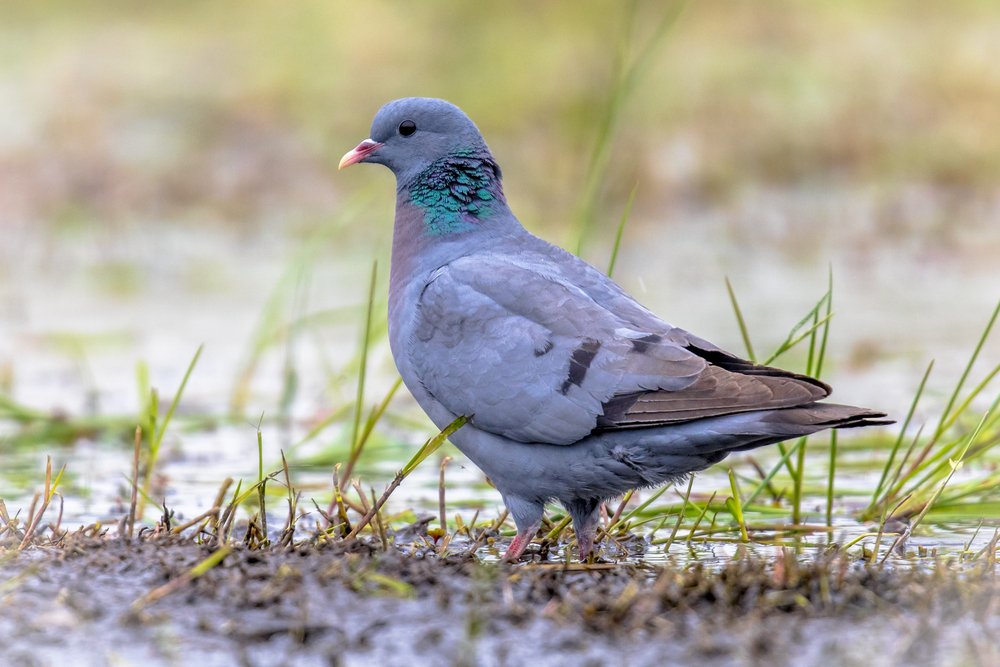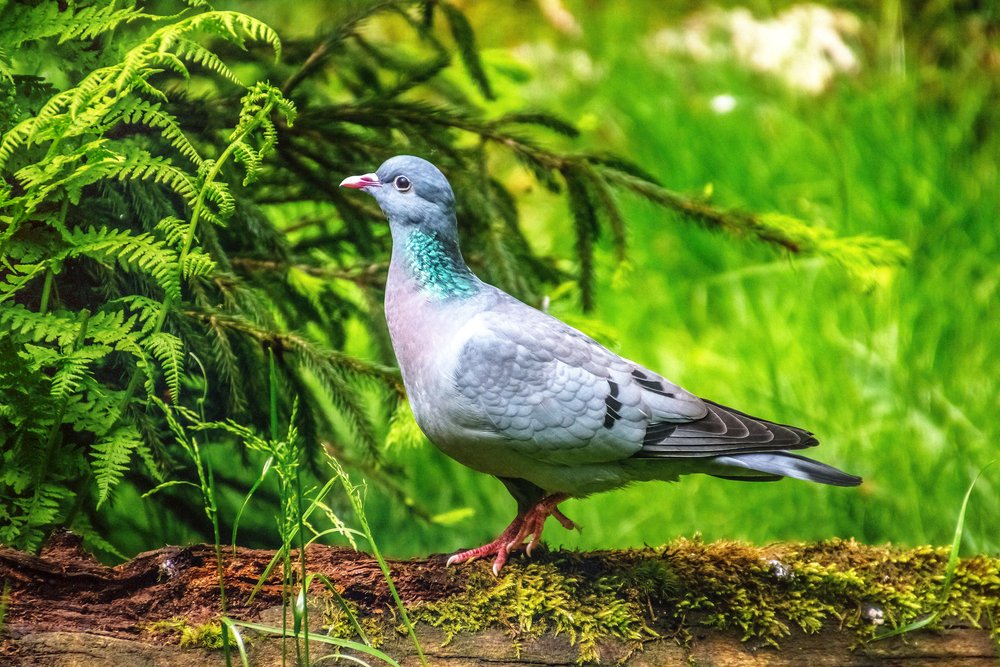The stock dove (Columba oenas) is a small yet beautiful species of bird found across the UK. It has a grey-brown back and wings with an off-white underside, making it easy to identify when out in nature. This bird also features distinctive purple patches on its neck, which help set it apart from other similar-looking birds, such as wood pigeons or collared doves. With so much variation between different members of this species, understanding the physical characteristics, diet & feeding habits, behaviour, and breeding & nesting habits can be quite daunting for even experienced wildlife observers. In this article, we’ll look at all these aspects surrounding the fascinating stock dove.
Overview
The stock dove (Columba oenas) is a species of bird in the Columbidae family, which includes doves and pigeons. This species has a wide range across Europe, North Africa, and parts of Asia.
Physical Characteristics Of The Stock Dove
Stock doves are medium-sized birds with greyish-brown plumage on their back and wings, while their head and neck have an iridescent bluish-green sheen to them. They have a white rump patch that stands out when they fly away from predators or during courtship displays. The bill is yellowish in colour, while the legs are short and pinkish-red. Juveniles have duller colours than adults but retain some of the same features, such as the white rump patch.
The stock dove has an average weight of around 130 grams for males and 110 grams for females. Its wingspan ranges from 58 to 65 cm wide when fully extended, making it slightly larger than other doves, such as collared doves or wood pigeons but smaller than common crows or rooks.

Stock Dove Diet & Feeding Habits
The stock dove’s diet consists mainly of seeds, grains, berries and insects. They will forage on the ground or in low shrubs for food items such as grasses, clover and other vegetation. It may also feed on buds from trees and shrubs when available.
Insects form an important part of its diet during the breeding season; they take flies, beetles, caterpillars and moths from foliage or off the ground. During winter, it feeds more heavily on grain crops such as wheat, barley, oats and maize, which are readily available at this time of year.
The stock dove is an opportunistic feeder, so they will take advantage of any food sources that become available to them; they have been known to visit garden bird tables to pick up scraps left by humans as well. They often feed alone but may join flocks when large amounts of food are present; they tend to eat quickly before moving to another area where there is more potential for finding food.

Stock Dove Behaviour
Stock doves have an interesting set of behavioural characteristics, let’s take a look at some below:
- Stock doves are generally quite shy and wary of humans but may become accustomed to people if they regularly receive food from them. When approached by a human or other potential predator, the stock dove will usually fly away quickly.
- Stock doves are most active during the day when they forage for food on the ground or in trees and shrubs.
- During breeding season, pairs may be observed performing courtship displays such as bowing their heads and cooing softly at each other.
- Pairs also engage in mutual preening activities, which help strengthen their bond with one another.
- In addition to being social birds, stock doves are territorial creatures that defend their nests vigorously against intruders such as cats or magpies. If an intruder approaches too close to the nest site, both parents will fly out towards it while calling loudly and aggressively chasing it away from their territory.
- During the breeding season, when nesting near humans, stock doves can become a nuisance due to their loud calls, which can be heard throughout the day and night. However, this behaviour is usually only temporary until chicks have fledged after which adults tend to move away from human habitation again.
Breeding & Nesting Habits
Stock doves are monogamous birds, meaning they form long-term pair bonds with one mate. During the breeding season, which typically begins in April and lasts until August, stock doves will build their nests in tree cavities or crevices. They prefer to nest close to human habitation as it provides them with greater protection from predators.
The female stock dove lays two white eggs per clutch and incubates them for around 17 days before they hatch. The male helps feed the female during this time by bringing her food while she is in the nest. Once hatched, both parents take turns feeding their young ‘pigeon milk’ – a nutritious secretion produced by both sexes that is rich in protein and fat – for up to four weeks after hatching until they fledge at around 25 days old.
Once the chicks have left the nest, the parents continue to care for them until they become independent at around 8 weeks old, providing them with food and teaching them how to find food themselves and other important survival skills such as avoiding predators and finding shelter when needed.

Stock Dove FAQs
How rare is a stock dove?
The bird can be found across most of England and Wales, as well as parts of Scotland and Ireland. The species has declined slightly in recent years due to habitat loss, but it remains widespread and abundant throughout its range.
What noise does a stock dove make?
The stock dove has a distinctive cooing call that sounds like “coo-COO-coo” or “cu-CU-cu”. The sound can be heard both during the day and at night, making it one of the few birds whose calls are audible even after dark. The sound is often repeated several times before fading away into silence. This peaceful call makes the stock dove an enjoyable addition to any wildlife garden.
What is the difference between a stock dove and a rock dove?
Stock doves (Columba oenas) are medium-sized birds that can be found in Europe, North Africa and parts of Asia. They have a distinctive grey plumage with white patches on the wings and tail and a black neck collar. Stock doves feed mainly on grains and seeds but will also eat insects.
Rock doves (Columba livia), commonly known as pigeons, are larger than stock doves and have an overall blue-grey colouration with darker bars across their wings. Rock doves are highly adaptable to human environments such as cities, where they can often be seen scavenging for food or nesting on buildings. They feed mainly on seeds, fruits and scraps from humans.
Conclusion
With its distinctive grey-brown plumage, the stock dove stands out from other birds in the area and can be easily identified by its size and colouring. Its diet consists mainly of seeds, grains and berries, while its behaviour includes nesting in cavities or on ledges and frequent visits to open fields for feeding. Breeding season begins in late spring when pairs start building their nests using twigs, grasses and feathers. All these features make the stock dove an interesting species to observe for any wildlife enthusiast.

Ash is a contributing author who has been writing about wildlife for as long as he can remember. He has a vast knowledge of many different types of animals, from the tiniest shrews to the great whales that live in the deepest oceans.
